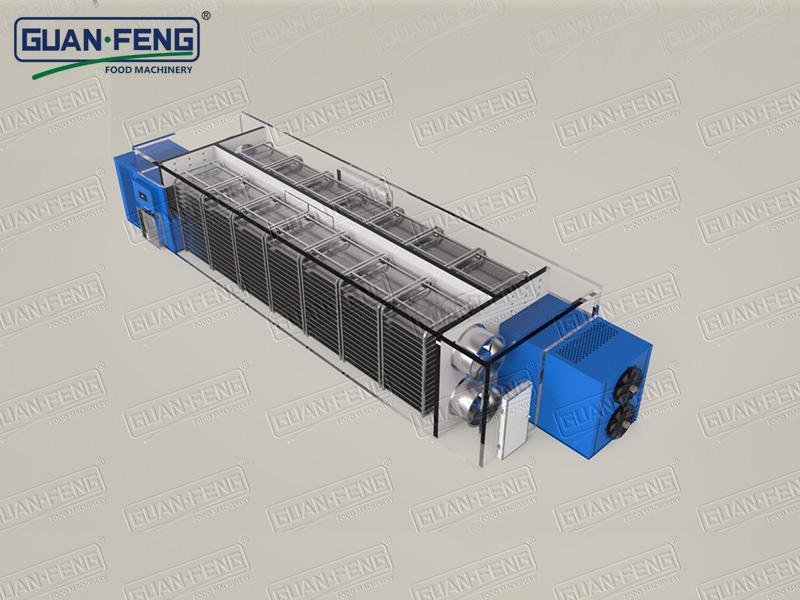Dried foods are tasty, nutritious, lightweight, easy to prepare, easy to carry and easy to use. Low humidity, low heat and good air circulation are critical for successful drying. You can use a dehydrator, oven, microwave or even air-dry some foods. Start with good quality foods. Blanch vegetables first and pretreat most fruit. Remember, successful drying takes time. Once dry, store foods in a dark, cool location in containers that keep out moisture and insects.
How does drying keep food from spoiling?
Drying or “dehydrating” food is a method of food preservation that removes enough moisture from the food so bacteria, yeast and molds cannot grow.
How to dry food safely
By using the right combination of warmth, low humidity and air current, you can safely dry foods. To dry foods successfully you need:
Low humidity. Low humidity allows moisture to move from the food to the air.
A source of low heat. The warm temperature allows the moisture to evaporate.
Air circulation. Air currents speed up drying.
Methods of drying food
Dehydrators
Produce the best quality product as compared to other methods of drying.
Most food dehydrators have an electric element for heat and a fan and vents for air circulation.
Efficient dehydrators are designed to dry foods uniformly and to retain food quality.
Oven drying
An oven takes 2 to 3 times longer to dry food than a dehydrator. Drying in an oven is slower because ovens do not have built-in fans for the air movement.
The oven uses a great deal more energy than a dehydrator.
Prop the oven door open while drying
To use your oven for drying:
Check the oven dial to see if it has a reading as low as 140 F or use the ‘keep warm’ setting. If the thermostat does not go this low, your food will cook instead of dry.
An oven thermometer placed near the food gives an accurate reading of the drying temperature.
Leave the oven door propped open 2-4 inches and place a fan near the outside of the oven door to improve air circulation.
Sun drying
Sun-drying is not recommended in Minnesota due to our high humidity and cool night temperatures.
Foods dried in the sun can take 3-4 days to dry; if the humidity is high, as is generally the case in Minnesota, the food will mold before it dries.
Sun-drying requires constant exposure to direct sunlight during the day and a relative humidity of less than 20%. These conditions are found only in areas like the Sacramento Valley of California or in Arizona.
Herbs handing upside down for drying
Air drying
Air drying differs from sun-drying, since it takes place indoors in a well ventilated attic, room or screened-in porch.
Herbs, hot peppers and mushrooms are the most common air-dried items.
Herbs and peppers are not pretreated, but simply strung on a string or tied in bundles and suspended until dry.
Enclose them in paper bags to protect them from dust or other pollutants.
Microwave drying
Is a quick way to dry small quantities of herbs and some leaf vegetables, but it is not successful for most other foods.
Food which has been microwave dried often tastes overcooked rather than dried.
Drying herbs in the microwave
To dry small quantities of herbs:
Place no more than 4 or 5 herb branches between two paper towels and microwave for 2-3 minutes.
Remove the herbs. When cool, check to see if they are dry and brittle. If not, repeat drying for 30-second intervals until dry. If you interested in learning more information, please check below link: https://www.gf-machine.com/product/drying-equipment/ maybe GuanFeng Vegetable Drying Machine can helpe you frozen quickly.

